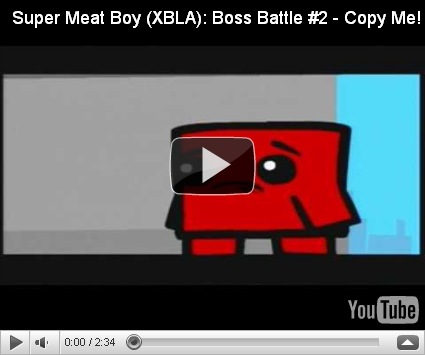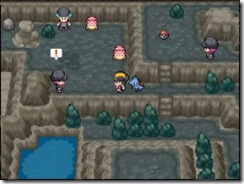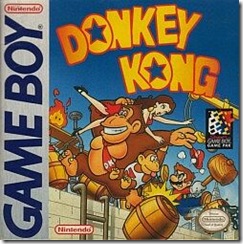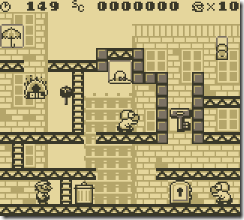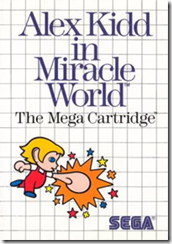Gaming has come a very long way since its original offerings in many different ways including technology, design and social standing. In terms of consumer gaming, it is arguably the youngest industry in the entertainment market and is still trying to establish itself today. Up until perhaps this generation of consoles (beginning with the US release of Microsoft’s Xbox 360 in 2005) gaming was mostly seen as a toy by the mainstream – a plaything usually enjoyed by younger people. To help change this perception, while Microsoft and Sony were fighting for High Definition dominance with the 360 and Playstation 3 to appeal to the mass market, Nintendo decided to opt for standard definition graphics and motion controls. It was upon this reveal that a new market of gamers became ever more prevalent – casual gamers.
Casual gamers by general definition are people who mostly game either minimally, socially or on-the-go to pass time. Up ‘til now gaming was something of a niche activity; a hobby dominated by a demographic dubbed “hardcore gamers”. With the introduction of motion controls and Nintendo’s push for the attention of non-gamers, the market for video games grew exponentially to being one of, if not the most profitable entertainment industry today. However given the successes of Nintendo with their current target audience, Apple’s iPhone App Store, and the recent release of Sony’s Playstation Move and Microsoft’s Kinect motion controllers, there have been repercussions.
Almost synonymous with the term “casual games” is the word “shovelware”. Shovelware games are often games that have limited funding, development time or development attention that the outcome is a product that usually results in frustrating gameplay, generic level design and low production values. To put it bluntly, they’re bad games made for quick cash. Before casual gaming shovelware was mostly reserved for licensed games – titles based on movies, cartoons or television shows that require a particular license to develop for (which are still around today). Since licensed games are usually aimed to be released alongside the release of its theatrical counterpart, more often than not they are given to smaller development studios with a very limited development schedule. Obviously, the solution to avoiding these games is to not buy them, correct? Unfortunately because the mainstream consumer does not pay close attention to games and/or read critical reviews to differentiate between a good and a bad game, shovelware (especially attached to a licensed name) manages to profit enough to cycle more mundane products.

The image that brought gaming to the mainstream.
Another term that crops up with casual games is “streamlining”. Often this can be worrying for core gamers since streamlining usually affects gameplay. The biggest offender in recent memory is Square Enix’s Final Fantasy XIII. For the longest time the Final Fantasy series was considered one of the most hardcore JRPG (Japanese Role-Playing Game) franchises in the industry. Mostly featuring turn-based battle systems, stat tracking to manage your characters in combat and lenghty storylines JRPGs could be considered quite a daunting experience for non-gamers. Square Enix attempted to rectify this by substantially lowering the micro-management of battles, side quests and freedom of manueverability (no joke, outside of battles and cutscenes for the first twenty hours all you do is walk forward). Though this game wasn’t specifically targeted towards non-gamers, it was made to be more “accessible” for a broader audience.
Some could also argue that New Super Mario Bros Wii’s streamlining negatively affected the gameplay with its additions of Bubble Mode and Super Guide. When playing in multiplayer anyone having problems overcoming a particular point may press A and enter bubble mode, which renders the player invulnerable to damage though removing control. In order for the player to return to action they must shake the Wiimote to draw closer to another player and have that player collide with the bubble to free them. If abused, bubble mode potentially leaves the challenge to just one player while all others are free to float about the stage. Super guide on the other hand can only be accessed once a player fails to complete a stage eight times. Upon this, a green “!” box will appear and when activated shifts control of the player to the computer to complete the stage – the player can jump back into control however by pressing the + button on the Wiimote. Both of these features are completely optional (and the first only being available during multiplayer), but are still often brought up in debates about NSMBW’s difficulty.
Streamlining isn’t always a terrible thing, however. Games like Mass Effect 2 benefitted from this process immensely in terms of inventory and special ability management. Mass Effect had a mostly cumbersome menu and loot system to the point where it eventually became annoying having to manage all the non-usable items and weapons that weren’t compatible with your character’s class or squad mates. Other titles that were streamlined for the better include Super Mario Galaxy 2, Assassin’s Creed II, Halo Wars and World of Warcraft: Cataclysm.
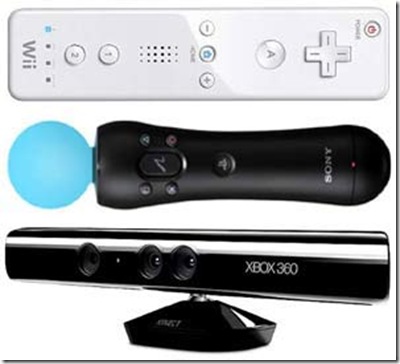
Waggle for everything. Waggle in precision. Waggle your body!
A growing trend of trying to attract non-gamers is the use and, a lot of the time, misuse of motion controls. At the unveiling of the Wii Remote concept a lot of gamers were confused as whether this would be a good or bad thing. During Nintendo’s press conference at the 2006 E3 people were amazed at what motion controls could mean for the gaming industry, especially from the first impression of Wii Sports Tennis. Instead of the precise 1:1 control of the Wiimote that was initially speculated, gamers were treated with waggle-filled titles that left our hopes diminished. During the first couple of years after the Wii’s launch there was an abundance of mini-game compilations that were just rehashes of the same ideas. Since then there has been a surge of refining and redefining of motion controls beginning with Nintendo’s Wii Motion Plus peripheral to add precision to the Wii Remote, and the launches of Sony’s Move and Microsoft’s Kinect. Even a huge amount of today’s mobile phones feature some form of motion detection, whether it be gyroscopes or accelerometers.
Another control method popular among casual games is touch-screen controls. Many more games have been praised in their sense of control with touch-screens than motion however in the case of some of today’s smart phones such as the iPhone, systems without button input often lead to some unresponsive or problematic experiences. The Nintendo DS’s launch in 2004 paved the way for touch-screen based gaming with its dual screen layout. With its top screen being a normal LCD monitor and its bottom being touch-sensitive the DS has seen enormous success with puzzle, action, strategy and first-person games. With two screens players were able to enjoy touch-sensitive gameplay mechanics without much screen obstruction since all systems are recommended for the use of a stylus. Apple’s iPhone, however recently seeing enormous success, still often struggles to find un-hindered gaming due to its utilisation of single-screen multi-touch technology sans stylus/button control. In terms of puzzle and racing games, more often than not the iPhone shines in its control since the players’ fingers aren’t constantly covering the screen. However in terms of shooting, fighting and adventure games it is often a nuisance and gains critical feedback. This is also evident in other smartphones that only utilise touch-screen control.

The lack of buttons on mobile devices can often prove problematic for gaming.
Though one highly praised feature pioneered by the iPhone is its App Store – an in-built, inexpensive, mobile digital distribution platform for games, utilities and other programs. This completely revolutionised digital distribution in 2008 since it offered ease of distribution for developers with a 70%/30% revenue share (the latter being Apple’s income), iTunes store browsing, and on-the-go purchasing and downloading via your cellular network. Though at first the App Store was more directed to distributing programs for iPhones, it soon broke the device through to being a legitimate handheld gaming contender against the Nintendo DS and Sony PSP.
The video game industry has seen a massive turn-around in the last half-decade. Usually in that time we would just have a change in console hardware, but now we have seen a major shift in audience and control methods. New control methods such as the Wii Remote, Move Controller and Kinect are only the bare bones of motion gaming’s potential. With Nintendo regularly leading the charge in gaming innovation first with D-pad control, 4 player gaming, analogue sticks, motion controls and next year glasses-free 3D gaming with their new handheld, the 3DS, it’ll be interesting to see what they will come up with for their next home console. Let’s just hope they don’t put us hardcore gamers in the backseat this time, yeah?


